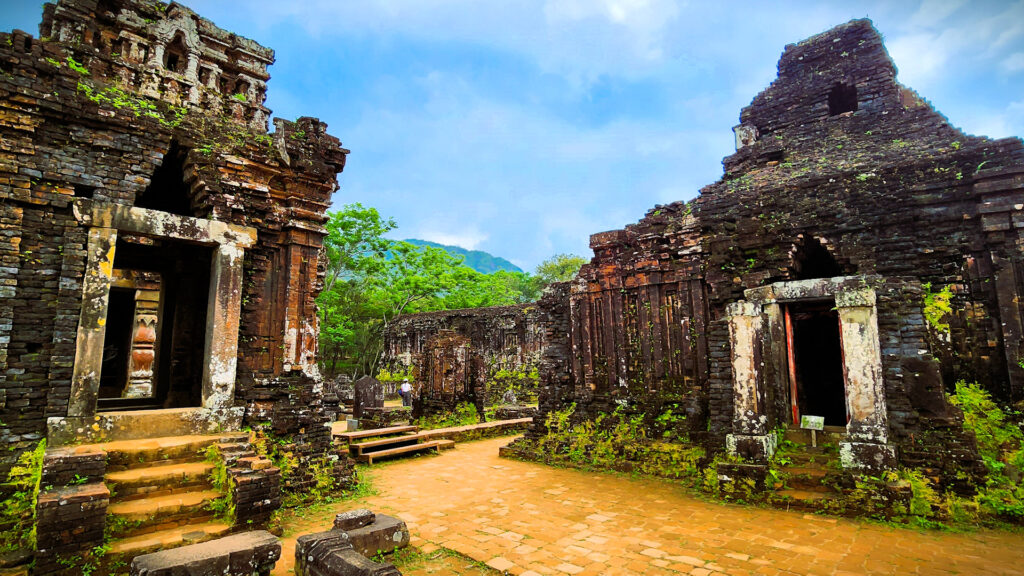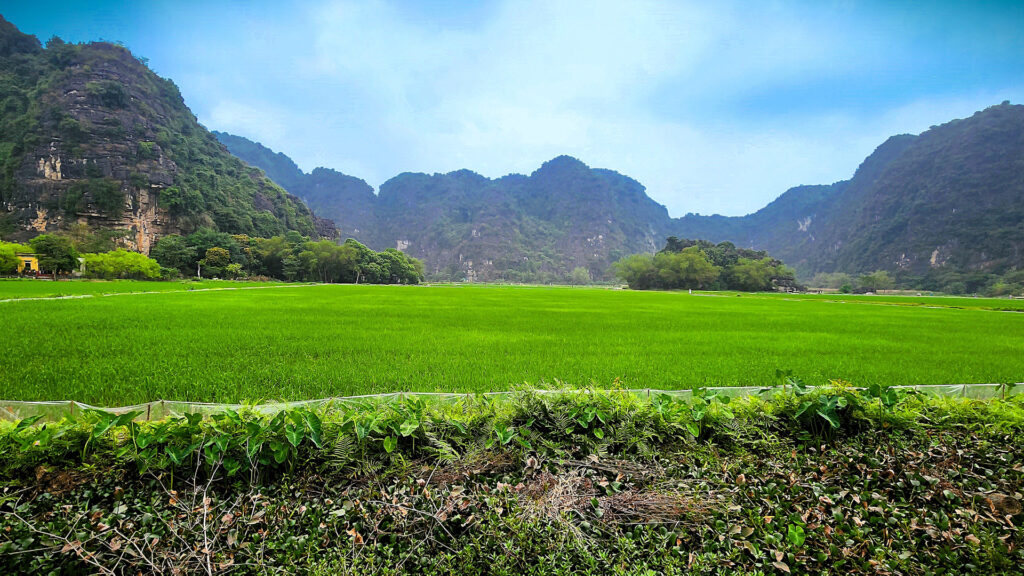Is There a “Best” Time to Visit Vietnam?
The “best” time to visit any place will almost always be subjective since different things people encounter while traveling vary in their importance. For example, one traveler might base every single ounce of her travel on the weather. Is it nice for traveling, or is it rainy, snowy, or something uncomfortable? Another traveler might abhor crowds, which means traveling in the off-season will always be his goal.
No matter your traveling style, you can definitely find a great time to visit Vietnam. The iconic cities, historical areas, and people of this Southeast Asian country are always amazing, even if you have to deal with something unfortunate, like crazy humidity. And if you’re wondering whether Vietnam has seasons, it does! However, some areas of the country don’t experience significant change on a seasonal basis. It just depends on where you go.
One thing to note about traveling to Vietnam is that it’s not like Europe, where you might encounter an entire city entirely empty or devoid of people because everyone is on vacation. When everybody takes a vacation, that not only means that it can get difficult to get tickets to various venues, but it can also mean it’s tough to get a place to stay since everyone – domestic and foreign – will be vying for the same hotels, motels, and B&Bs.
But for Vietnam, there isn’t a month that’s considered a no-go because of the behavior of its citizens. You might encounter a few days of difficulty in booking places during the lunar new year, but the new year doesn’t last a terrifically long time and is generally around late January or early February (it changes each year, so look it up if your travel plans to Vietnam are in the winter).
Let’s discuss the best and worst times to travel to Vietnam based on weather patterns and tourist seasons.
(note: some of the links here are to websites with which I am an affiliate, and your purchases help fund my website)

Avoiding the Crowds in Vietnam
The busiest times for travel in Vietnam tend to be the winter and early spring, which is December through March, as well as late summer in August and September. Even though there is the threat of the monsoon season for some areas of Vietnam in September, one of the most popular times to travel there is during the Tết Trung Thu, or Mid-Autumn Festival, which has Chinese roots and is celebrated by millions of people in Vietnam and beyond.
If you can handle the increase in crowds during the festival, it’s definitely worth experiencing it in Vietnam with all the decor and revelry, but you can also use it as a time to avoid traveling to Vietnam, should you hate the crowds. Tourists enjoy traveling in the late summer and early fall because of the opportunity to enjoy the holiday while also avoiding the heaviest portions of the summertime monsoon season.
December and January are also popular times to travel to Vietnam, especially the southern half of the country, where it doesn’t rain as much, and you won’t have to carry an umbrella everywhere you go. If you visit the northern part of Vietnam near the coast, like Hanoi and Ha Long Bay, you’ll find lots of people traveling in the winter due to the cooler temperatures throughout the region.
The weather in Vietnam greatly impacts the density of crowds of tourists, especially around popular places to visit, like the ancient temples found throughout the country. If you’re not averse to carrying an umbrella, you can visit Vietnam during the monsoon season and usually enjoy much fewer people than you might when the weather isn’t humid, wet, and hot.

When to Travel for the Best Weather in Vietnam
The “best” weather for any traveler will be subjective, yes, but let’s assume that you want to avoid the monsoon seasons and any time with super hot temperatures. For the southern part of Vietnam, this means avoiding the summer since temperatures can soar into the 90s (F), and the relative humidity can make it feel like you’re swimming while you stroll around.
The driest part of the year, at least in southern Vietnam, is definitely in the winter, and the temperature is definitely more amenable then, too. However, you do end up dealing with bigger crowds in the winter, too, so enjoying an itinerary in Vietnam with fine weather usually means enjoying it alongside thousands of other travelers and tourists everywhere you go.
One thing to remember, though, is that if you choose to travel to Vietnam during the coolest months of the year, you probably won’t get to enjoy lounging on the beautiful beaches that run up and down the coast. In Da Nang, for example, which is kind of near the center of the country and is along the coast, the beach isn’t warm enough, and the cloud cover is often too thick for beaching.
If “good” weather to you means having the opportunity to sit on the beach under the hot sun, you’ll want to travel as close to summer as possible without hitting the monsoon season. May is a decent month, and you might even be able to enjoy the beach in June without a torrential downpour if you’re lucky. However, if you’re more interested in touring historical sites, the best weather will usually be in the winter for cooler temperatures and less rain.

My March Trip to Vietnam
I visited Vietnam in the month of March, which I chose because it was when I could schedule the trip and not run into problems at home with work or other commitments. I only stayed in Vietnam for a little over a week, but it was enough for me to make an informed decision on whether I would travel back to Vietnam in March or choose another month.
If I could choose any month, I’d probably choose December or January since those months would offer the best temperatures. One of my biggest pet peeves when I travel is high temperatures, and Vietnam can get really hot – especially in the south – during the summer. And even leading into the summer, temperatures can get pretty uncomfortable, especially as the monsoon months come along and the humidity starts to rise.
However, as far as March goes, the weather was actually quite nice for much of our trip and our guided tours, even though it was a little rainy sometimes. However, I wouldn’t say that it was rainy enough for a rain slicker and an umbrella. It was more of a kind of misty rain that you could mostly ignore. It was raining during part of our walk through the My Son temple complex, but it didn’t really matter.
That picture above was taken during our walks through the complex, and as you can see, the weather was variable enough that I caught spots of blue sky and interesting clouds in my photographs. However, in March, Hanoi, which is in the far north of the country, was quite gray when we visited. The clouds receded somewhat when we went to the coast for our Ha Long Bay day cruise, but the weather was still quite overcast much of the time.

Dress Codes for Hot Weather in Vietnam
One facet of travel that I think is helpful for you to understand about traveling in Vietnam is the overall dress code. The Vietnamese are more modest than Americans or Westerners in general (I’m American, so that’s my perspective here), and you might need to avoid highly revealing clothing, especially if you’re touring any temples or sacred sites around Vietnam.
Indeed, for some of our tours through Vietnam, I was advised that I should avoid shorts and that tops with exposed shoulders weren’t a good idea during entry into the temples. Fortunately, the weather wasn’t super hot, so I could wear tights and carry a light jacket with me to cover up whenever necessary. It’s not like I would have gotten into trouble in Vietnam with the wrong clothing, but I didn’t want to disrespect the culture.
I think that if I’d traveled to Vietnam during the hotter months, I would have had some trouble with the dress code and staying cool. When we jumped across the border into Cambodia, I encountered temperatures above 90 degrees Fahrenheit (even though it was March), and I was VERY hot. Since we were mostly touring temples during our brief stay there, it was really tough to wear pants and cover-ups so as to remain respectful to the local culture.
If you’re not bothered by hot temperatures and bulky clothing, you might not have a problem traveling to Vietnam in hot weather, but it’s just something to note when you’re packing your clothing in your luggage. And this advice applies to all genders, too. It’s not just that females cover up when they go into temples. The advice I was given was “no shorts” for anyone on several of our tours. Just a word of warning so you don’t show up in skimpy clothing and cause a ruckus with your tour guides. The Vietnamese aren’t prudes, but they aren’t as exhibitionist as Westerners.





